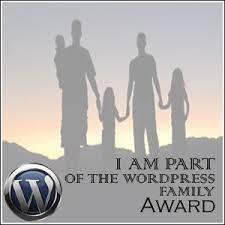
The left hands of six good friends and very talented writers. Can you tell which ones are right-handed or ambidextrous?
Dear Mom,
I remember first grade, proudly holding my hand up TWICE in answer to the teacher’s two questions. First question: “How many of you are right handed?” (We were 5 and 6 year olds, it was the first day of school, and she had to explain the question to some of the students.) In answer, I held up my right hand, as did many of the others. Then she asked, “How many of you are left handed?” I paused a second and then held up my left hand.
The teacher gave me an irritated oh-no-here-we-go look. But after I showed her I could print my name with my right hand AND my left hand, she tapped my right hand with a ruler and said, “From now on, beginning in this classroom, you will use this hand.”
At home I continued to use both hands, but at school I avoided the ruler and joined the majority of right-handed students. Maybe it bothered me more than I realized. In 5th grade I began “mirror writing”—even in cursive—writing from right to left. I could write it quickly, and anyone could easily read it by holding the paper up to a mirror, but the teacher wasn’t impressed, so I stopped doing it at school.
Well Mom, guess what tomorrow, Monday, August 13th is? It’s International Left-Handers’ Day! In honor of those good old “confused about which hand to use” days, here are some statistics. About 90% of the population is right-handed, so that leaves 10% left-handed (but maybe some were actually ambidextrous and lumped into the big group against their wills). And speaking of ambidextrous, there’s an unproved medical theory that difficult or stressful births often happen among babies who grow up to be left-handed or ambidextrous. But the AMA doesn’t endorse it. Just as most religions do not accept the ancient superstition that left-handers were more prone to evil and are either weaker or stronger on both sides of the body than right-handers.
Eight of our presidents have been left-handed, most recently George H.W. Bush, Bill Clinton, and Barack Obama. On a Qwerty (standard) keyboard, 3,000 words can be typed with only the left hand; 56% of the touch-typing keystrokes are made with the left hand. In fencing, about half of the participants are left handed.
What I really want to say to you on August 13 is Thanks, Mom. At home I could always use whichever hand I wanted. When I was learning to knit, you taught me the basic stitches, but you also took me to a left-handed knitter to learn, and then you let me choose. And when I did mirror writing, you were irritated only because I’d actually written a sentence on the mirror…with your lipstick. After I cleaned it off, you had me write on paper, and you complimented me, saying I was creative and talented.
Years later, a teacher myself, in a classroom of high school students I’d sometimes quickly write information on the board in mirror-writing. The students who could read it without hesitation would nod and smile, but most of the others had to squint and figure it out. No one felt bad. It was okay either way. You had taught me that.
It was just one of the many things you taught by example, Mom, and I thank you.
I’ll be coming from Colorado to visit you in Kansas soon, and together we’ll celebrate International Left-Hander’s Day a few days late. I’ll bring the lipstick, we’ll write on the mirror, and then we’ll celebrate with cookies. Love you, Mom. Marylin

With my mom and Flat Grace (hand-colored by mom’s great-grandaughter, Grace)









































